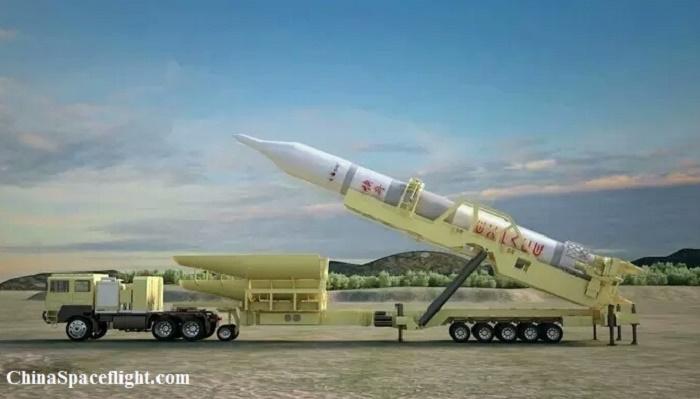Russia Working On The Nudol Anti-Satellite Missile System
Russia has been working on an anti-satellite weapon since 2015. The missile is called the Nudol or PL19 and it has been tested six times since then. The most recent test took place this month. For this test, the missile was fired from its transporter. There is great concern that Russia may test the new weapon on a real satellite in stable low-Earth orbit.
China tested such a weapon on an old weather satellite in 2007. The resulting explosion generated over two thousand pieces of debris which are still circling the Earth. These fragments pose a threat to other satellites and some will orbit the earth for decades. There was a wave on condemnation around the world after the Chinese test.
The Nudol interceptor missile is designed to accelerate rapidly out of the Earth’s atmosphere and strike the target which is assumed to be nearly overhead from the missile launch site. It does not carry any explosives and relies on the kinetic energy of the collision to destroy the targeted satellite. This is referred to technically as a direct-ascent kinetic interception.
The U.S. has invested billions of dollars in the development and testing of this kind of weapon. Most of the U.S. work has been done in the hopes of being able to destroy incoming nuclear intercontinental ballistic missiles before they reach their target. This mission is quite similar to the anti-satellite systems under development.
Anti-missile defenses are designed to blow up incoming missiles as they are descending to Earth after being launched. An anti-satellite missile targets a satellite in low Earth orbit traveling at seventeen thousand miles per hour or more. Despite these differences of speed and trajectory, in 2008 the U.S. Lake Erie cruiser successfully launched an Aegis missile designed for intercepting descending missiles to destroy a falling intelligence satellite.
China has been testing the DN-3, its newest anti-satellite missile in the opposite direction. This February, they used the DN-3 against a DF-21 missile in a test.
Unlike the U.S. and China, historically, the Soviets and then the Russians concentrated on using nuclear tip missiles to take out incoming missiles. They fell behind the U.S. and China in the development of a high precision kinetic kill vehicle to use against satellites. With the Nudol, the Russians are joining the anti-satellite weapon race. Russia also has the new S-500 surface-to-air missile system and they may revive an old design for an air-launched missile. The Nudol, the S-500 and the new system based on the old design could all be used to shoot down satellites.
While nuclear tipped missiles could be used to take out satellites, there is likely be damage to other satellites in the same orbit. In addition, there will be a much bigger generation of debris that with a precision kinetic weapons. In 1962, the U.S. Starfish Prime test detonated a nuclear warhead in the upper atmosphere. That test destroyed at least six satellites. The low Earth orbit is much more crowded now.
In 1983, the Soviet Union responded to the Reagan administration’s announcement of the Strategic Defense Initiative by declaring a self-imposed moratorium on anti-satellite testing. The Soviets and the Russians honored this moratorium until recently.
Last May, the U.S. Director of National Intelligence said that both Russia and China “perceive a need to offset any U.S. military advantage derived from military, civil, or commercial space systems.” Both of these countries “increasingly considering attacks against satellite systems as part of their future warfare doctrine.”
Unfortunately, the U.S. relies much more heavily on satellites for surveillance and communications in a conflict than either Russia or China. This make the U.S. more vulnerable to anti-satellite systems. Hopefully, the U.S. can capitalize on the global revulsion to the idea of attacking satellites in an armed conflict.
